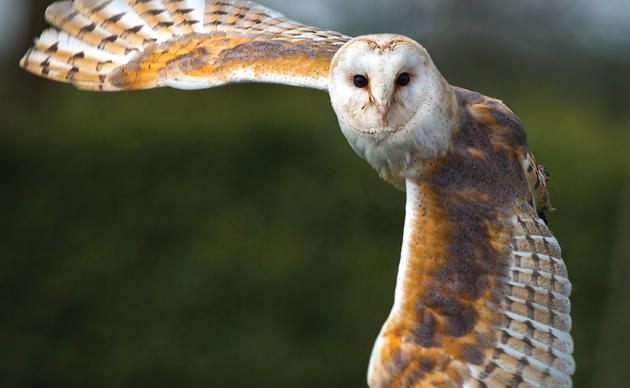Please welcome Audubon North Carolina conservation biologist Aimee Tomcho. As part of the Putting Working Lands to Work initiative, Aimee is engaging landowners across Western North Carolina to develop and restore habitat for the Golden-winged Warbler. Check in on her progress.
During October, seven Audubon biologists met in New York to discuss Atlantic Flyway-wide conservation strategies for the Working Lands initiative. From that meeting, the Audubon NC staff in Western NC is energized to continue putting working lands to work for the Golden-winged Warbler. Read on to see what they’ve learned.
Nationwide Conservation
Audubon’s Strategic Plan focuses on five important conservation strategies nationwide: Putting Working Lands to Work for Birds and People, Sharing our Seas and Shores, Saving Important Bird Areas, Shaping a Healthy Climate and Clean Energy Future, and Creating Bird-Friendly Communities. Click here to learn more on how Audubon North Carolina is working with all of these strategies to support birds across our state.
Each of these initiatives aligns Audubon’s work along the four flyways of the Americas--Atlantic, Mississippi, Central and Pacific.
“By connecting the Audubon network all along each of these migratory pathways for birds, we can weave a seamless web of conservation for both migratory and non-migratory species. And by coordinating resources and expertise, we can increase our efficiency across the network.” - Audubon’s Strategic Plan 2012-2015
The work to engage working landowners with management practices that can sustain their land’s work and the wildlife that occupies it becomes critical to conservation success.
“The Atlantic Flyway encompasses some of the hemisphere’s most productive ecosystems, including forests, beaches and coastal wetlands. From the northern Atlantic coast, and through the Caribbean to South America, Audubon is working to support this avian superhighway’s 500-plus bird species and millions of individual birds. Forty percent of the Atlantic Flyway’s bird species are species of conservation need. With only one-tenth of the U.S. landmass, this flyway is home to one-third of the nation’s people.” - Audubon’s Strategic Plan 2012-2015
Applying Strategies to North Carolina
In the Atlantic Flyway, biologists along the Appalachian Mountains are focusing on the Golden-winged Warbler (GWWA), a species with rapid population decline that inhabits “working lands”. The GWWA is not the only bird whose future depends on this land.
“Best management practices on ranches, farms, and forests hold the key to survival for more than 150 species of threatened grassland and forest birds.” - Audubon’s Strategic Plan 2012-2015
Matching management strategies with various environments and funding sources can be a complicated endeavor. Taking advantage of being a national network, Audubon is able to proactively address successes and failures to map out efficient regional management plans.
Strategy mapping was enhanced when seven Audubon biologists met in New York in early October to discuss Atlantic Flyway-wide conservation strategies for Putting Working Lands to Work for Birds and People. Details emerged on ways to best utilize Natural Resources Conservation Service’s (NRCS) Farm Bill-associated conservation practices to match the variation of landscape-level needs along the Atlantic Flyway’s range of suitable breeding habitat for GWWAs and other associated species.
In North Carolina, the limiting factor is percentage of early successional habitat, or grass and shrub land, across the landscape. However, in the Champlain Valley of New York and Vermont, the structural element limiting expanding GWWA populations is the abundance of adequate patches of forest. What will this mean if climate change eventually moves the GWWA range northward?
Partnerships Enhancing Successes
Audubon biologists visited a privately owned land parcel where GWWA have been observed during the nesting season. By partnering with the NRCS, Audubon is able to connect landowners with funding sources to put management recommendations on the ground. This work can most effectively be done when land managers can discuss range-wide conservation strategies and outcomes. Simple management techniques implemented this fall and winter will enhance the suitable habitat when Neotropical migrants return to for the breeding season.
Like Audubon NC, Audubon NY also partners with local land trusts to effect habitat change across the landscape. 1000 Islands Land Trust is working to manage a newly acquired conservation easement to balance active game hunting, bird watching and other recreation uses. At Otter Creek Preserve, Audubon NY biologist Andy Hinickle’s knowledge of grass and shrub land management is sought to enhance the land trust’s strategy for setting goals and priorities. Check out their Facebook post about our visit here.
Passion for Conservation
Wherever Audubon field biologists are, you can be sure they are passionately working to conserve habitat across the region to preserve the birds you love. Whether our feathered friends stop to forage in North Carolina on their way from Central America to breeding grounds in the Champlain Valley or build their nest in Southern Appalachian Mountains, we work to help ensure the habitat can meet the needs of birds, and people too.
To learn more about Audubon NC’s work with landowners in Western North Carolina to preserve nesting habitats for the GWWA visit our website.



